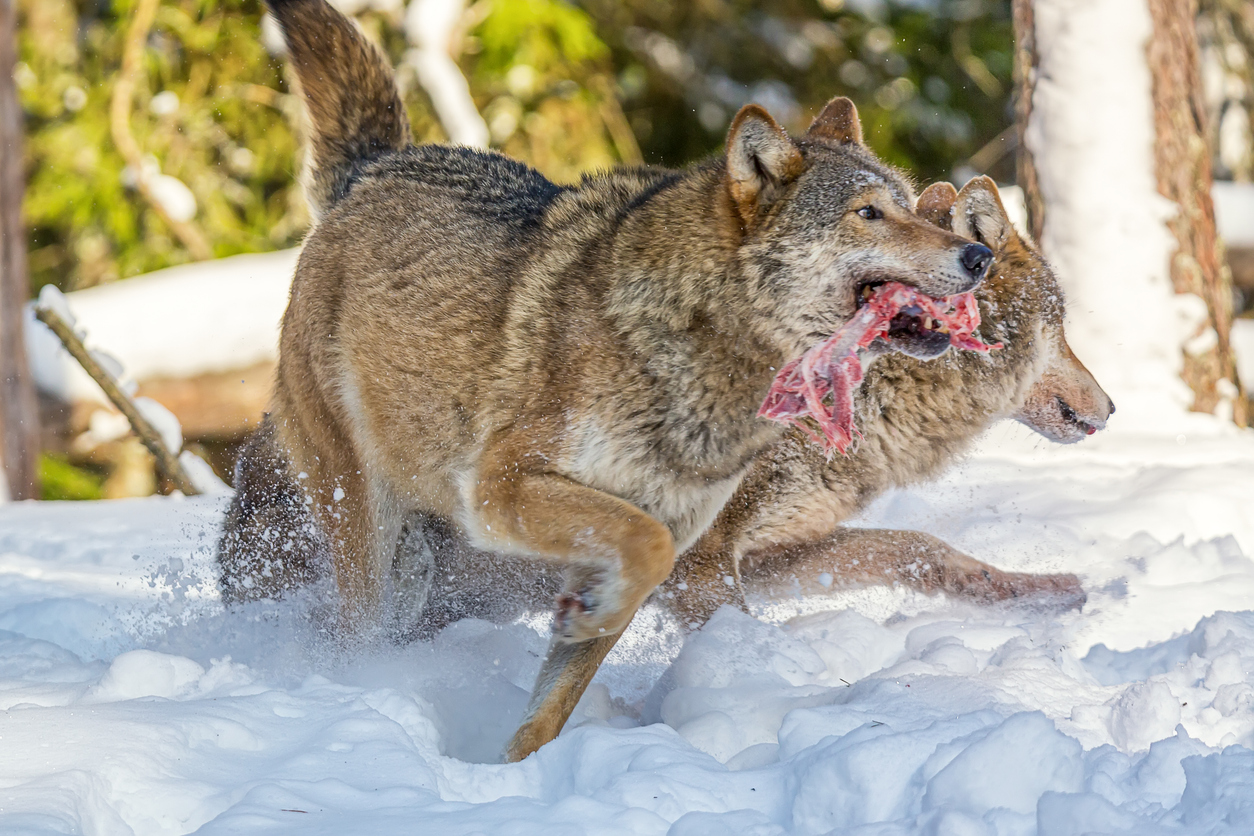The gray wolf population in Washington state set a reproduction record, growing by an astounding 44 animals in 2023. The state’s wolf population has increased for 15 years in a row and is now at its highest level since it was listed.
The question is, what will it take for the state to change its management policy for the predators?
Last year we proposed a state delisting of gray wolves in the eastern-most third of Washington state. We also proposed an incremental, local approach to delisting as gray wolves dispersed throughout the state. This would allow thoughtful management that relied on input from impacted communities.
The official 2023 gray wolf population count was 260 wolves in 42 packs. In 2022, there were officially 216 gray wolves in 37 packs in our state. Despite promises from state biologists that gray wolves would naturally disperse by 2021, there were no new wolf packs established outside of the Northeast, Northern Cascades, and Southeast portions of the state.
The recovery goals established in the 2011 Wolf Conservation and Management Plan are outdated and unrealistic given the facts on the ground. Wolves remain entrenched primarily in the northern portion of the state. Now is the time for the Washington State Department of Fish & Wildlife, residents in the parts of the state where wolves are prevalent, and legislators to come up with a solution that is beneficial for people and wolves.
Data from the 2023 population report clearly show the population will withstand management changes beyond what was envisioned in 2011. The population report notes 36 gray wolf mortalities, including 22 legal harvests by members of the Confederated Tribes of the Colville Reservation, and four instances of suspected poaching.
Despite the rapid increase of the wolf population, animal rights activists continue to make claims that are contradicted by both science and reality.
“If Washington’s wolves lose their protections as a state endangered species, the agency will kill even more wolves and squander their modest progress toward recovery,” said Sophia Ressler, a staff attorney at the Center for Biological Diversity, in a press release. “We’re going to do everything we can to ensure that Washington’s wolves receive the protections they deserve under state law and the wolf plan.”
Rather than being focused on an “all or none” strategy, addressing gray wolf management should be recentered upon workable, collaborative solutions. The 2011 plan outlines a 10-year goal that includes two key elements:
- 15 breeding pairs of wolves present in the state for at least three years (we are now at 26 breeding pairs), with at least four in eastern Washington, four in the northern Cascades, four in the southern Cascades / northwest coastal area, and three others anywhere in the state or for WDFW to consider initiating the delisting process if 18 breeding pairs are documented during a single year and the distribution objectives are met; and
- A variety of nonlethal and lethal management measures – from technical assistance for landowners to lethal removal – to control wolves that prey on livestock and establishes conditions for compensating ranchers who lose livestock to wolf predation
The 2023 population report highlights the continued downward trend in lethal removals, with just two gray wolves culled after confirmed depredations. The report also emphasizes the need for increased funding of the rancher compensation program. In 2023, $28,596 was spent on compensation for 23 livestock losses, or $1,243.30 per animal lost. By comparison, Colorado, reimburses livestock owners 100 percent of the fair market value of the animal up to $15,000 per head regardless of whether conflict mitigation measures have been used.
It is time for Washington state to change how it manages gray wolves. The data shows a species thriving in its chosen habitat – the Northern, Northeast, and Southeast portions of the state – and showing little inclination to relocate elsewhere. Now there is an opportunity to give incremental control back to local jurisdictions that have been most affected by the presence of gray wolves. By allowing local jurisdictions to take the lead in decisions around culling of gray wolves in cooperation with state agencies, affected livestock owners, and representatives from the conservation community, there is equal representation before a removal is done.
By finding new solutions, Washington state has an opportunity to move into a leadership role when it comes to predator management.




